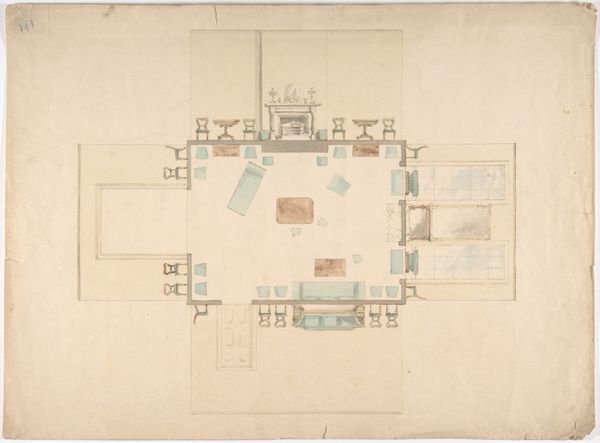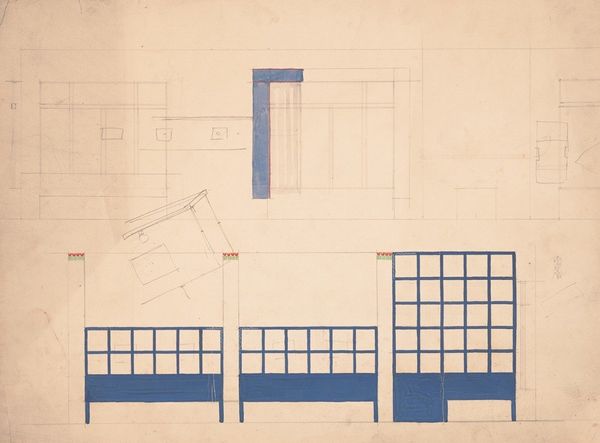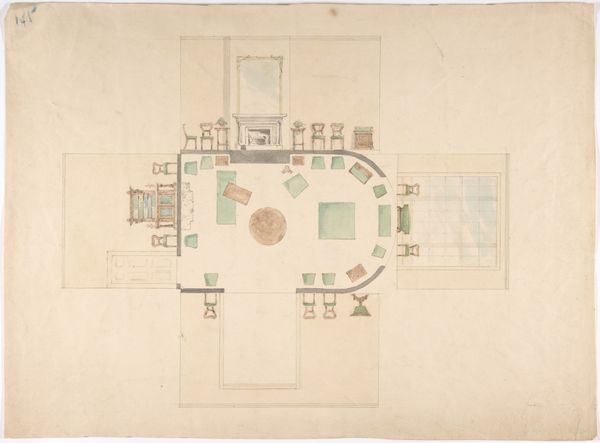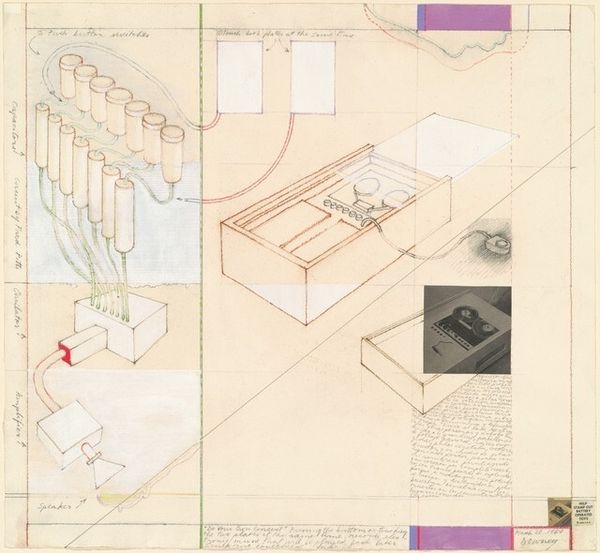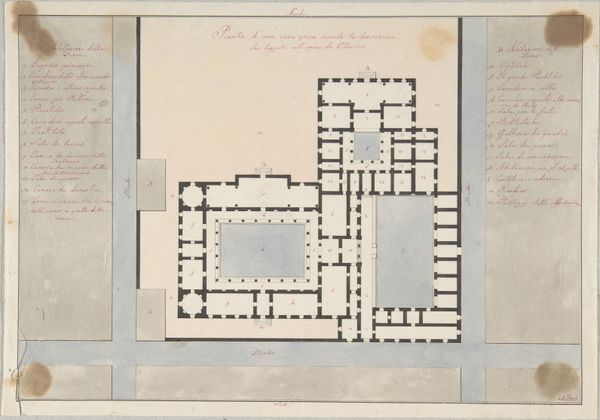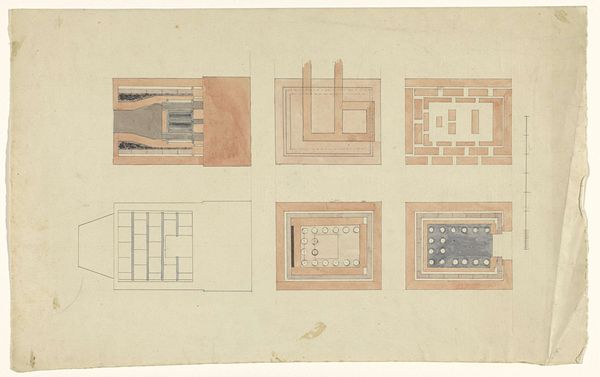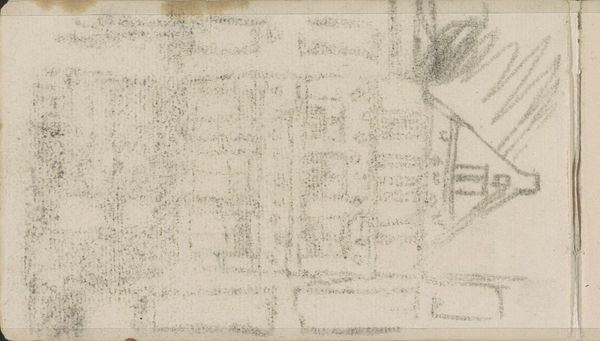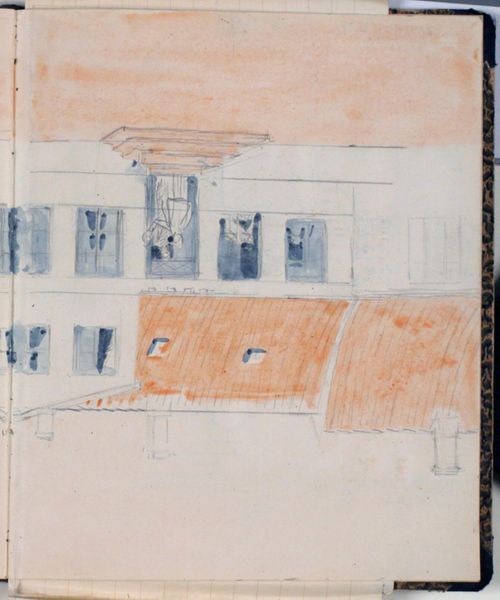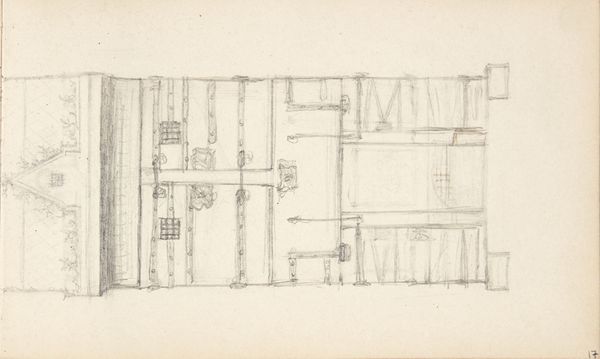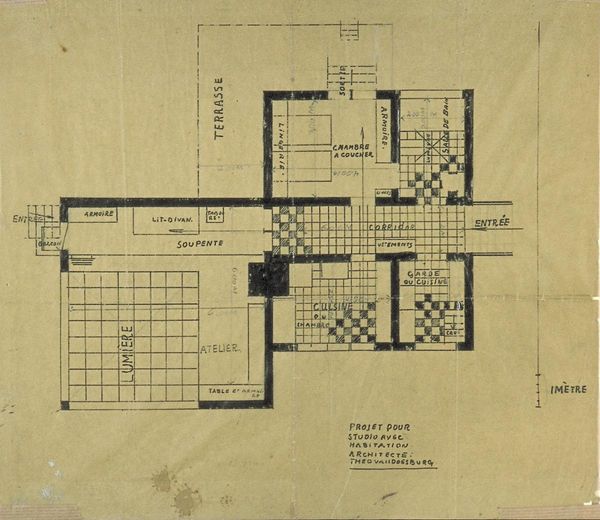
drawing, coloured-pencil, acrylic-paint, paper
#
drawing
#
de-stijl
#
coloured-pencil
#
pattern
#
acrylic-paint
#
paper
#
text
#
coloured pencil
#
geometric
#
geometric-abstraction
#
abstraction
#
line
Copyright: Public domain
Curator: This is "Stained glass composition," a work from 1923 by Theo van Doesburg. Editor: Immediately, what strikes me is the raw materiality. You see the grid beneath, the tentative lines—it exposes the entire making process, as if laid bare for examination. Curator: Absolutely. And that's very characteristic of De Stijl. The use of primary colors, the geometric forms—it’s all about stripping down art to its essential elements to create a universal visual language. What does that language say to you? Editor: I'd say the transparency allows a discourse about labor and the relationship between the hand and industrial processes. This grid is like a template that can be used, copied, and even commercialized. How can that template be disrupted? Who benefits from its commodification? Curator: I can't help but think of it through the lens of social and political change of that era. Doesburg's pursuit of pure abstraction was also driven by a desire to create a more harmonious and balanced society. By rejecting subjective expression, he wanted to achieve something objective, universal... utopian, even. Editor: Utopian perhaps, but within reach because of those visible components that show labor. We can touch it; we can emulate it; we can adapt and produce other arrangements from that making. We are so aware of how he constructed this image. Curator: Precisely. By making these structures, he believed it had transformative potential—challenging conventional ways of seeing and experiencing the world around us. But thinking about labor and materiality... how might our understanding of gender roles influence our reading? Was there a particular exploitation in production? Editor: Yes, because then we can discuss who that transformative potential truly serves, or even whose hands held these tools. Were they recognized? Acknowledged? Valued for their contribution? That changes the way we look at this piece. Curator: Definitely. It allows us to critically engage with the idealistic ambitions of the movement, while also revealing those parts in making it. Editor: Thinking about production changes how one interprets "Stained glass composition." Instead of something so sterile, it creates opportunity.
Comments
No comments
Be the first to comment and join the conversation on the ultimate creative platform.
